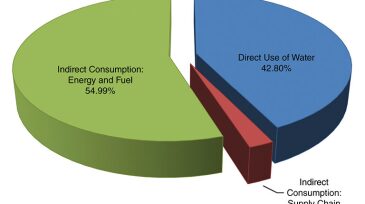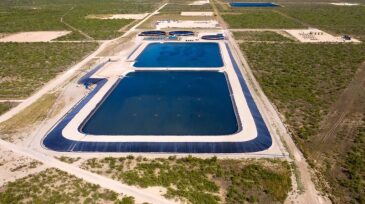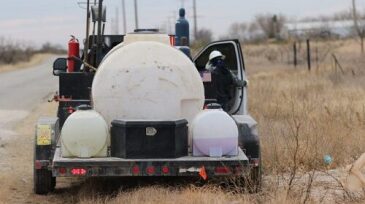Water management
This paper describes a decision-support system that integrates field data, system specifications, and simulation tools to quantify system performance, forecast operational challenges, and evaluate the effect of system modifications in water management.
If there is a key takeaway as 2025 comes to a close, it is the new level of diligence and depth in water-management planning, along with a growing recognition of the need to invest in more complex methods and sophisticated technologies.
This paper demonstrates that high-purity salts of calcium, magnesium, strontium, sodium, and lithium can be recovered from produced-water brine using a chemical-reaction pathway followed by vacuum-driven crystallization and a lithium-extraction process.
-
While it is one of the top producers of liquid hydrocarbons in the US, New Mexico is also among the driest. The issue has culminated in a restriction on new freshwater leases issued by the state and a push for more recycling of produced water.
-
The last growing market of US land services, water disposal, is set for an all-time high in the Permian.
-
The complete paper focuses on sources of produced water from conventional and unconventional onshore oil and gas operations and addresses the challenges and opportunities associated with reusing the produced water.
-
A global trend has developed toward the application of risk-based assessment (RBA) techniques for managing environmental risks and considering potential effects of produced-water (PW) discharge.
-
Sustainable water management should encompass current management of water resources as well as its potential effect on the future. Sustainable water management in oil and gas is a journey that will need approaches from many perspectives.
-
The complete paper discusses the steps taken by Repsol in Peru in accordance with its environmental strategy to become certified for the Blue Certificate granted by ANA to companies that efficiently manage water in their operations and manage shared-value projects with their stakeholders.
-
Operators of unconventional plays face a conundrum—how to dispose of produced water economically without risking seismicity or aquifer contamination. A recent paper and virtual forum offer ideas for optimizing saltwater disposal.
-
The Eddy State Complex adds 300,000 B/D of recycled produced-water treatment capacity in the northern Delaware Basin. The company said it is on track to recycle 25 million bbl of produced water this year.
-
Breakwater’s produced-water-recycling facility has the flexibility to recycle, store, or dispose of water. It has already recycled nearly 5 million bbl of produced water in the third quarter of 2020.
-
The state of New Mexico finalized changes to its produced-water regulations on the oil and gas industry after months of adjustments and debate between state regulators, environmentalists, and oil and gas industry leaders.













